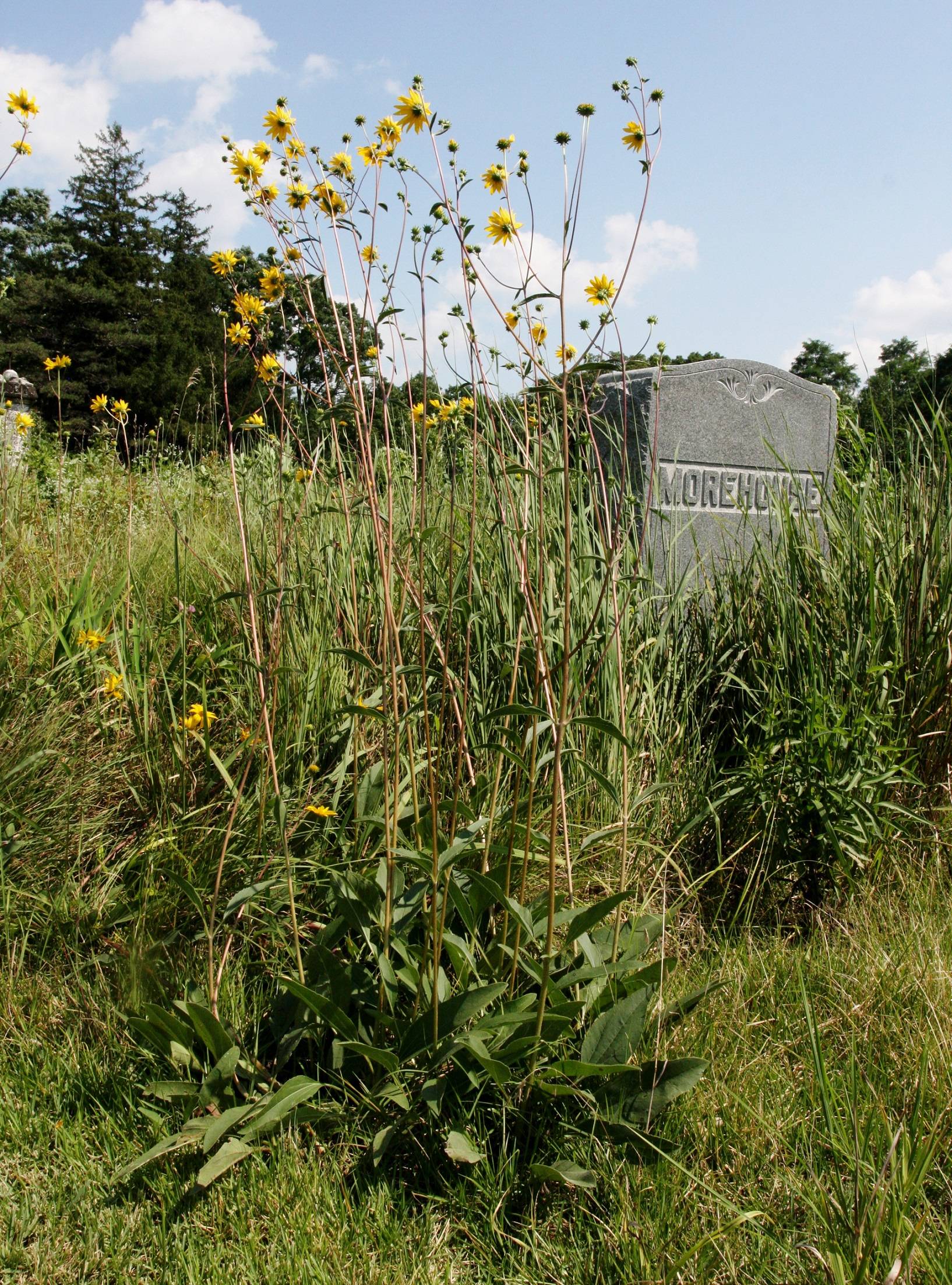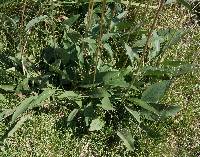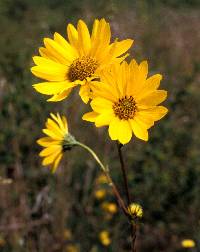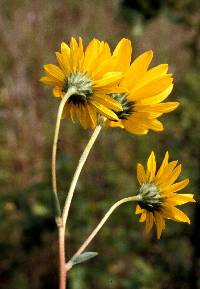|
|
|
|
Family: Asteraceae
fewleaf sunflower
|
Perennials, 60-150 cm (rhizomatous, sometimes stoloniferous as well). Stems (often reddish) erect, pilose to appressed-hairy proximally. Leaves mostly basal; opposite; petioles 2.5-10 cm; blades oblong-lanceolate or elliptic to ovate, 5-20 × 1.5-7 cm, bases cuneate, margins entire or serrulate, abaxial faces scabrous to hispidulous, gland-dotted (cauline usually smaller, rarely 2-4 pairs well developed). Heads 1-4(-12). Peduncles 1-14 cm. Involucres cylindric, 9-14 mm diam. Phyllaries 20-25, lanceolate, 4.5-7(-11) × 1.5-2.5 mm, (margins usually ciliate) apices acute to short-acuminate, abaxial faces glabrate to sparsely pilose (hairs moniliform), not gland-dotted. Paleae 5-7 mm, subentire to 3-toothed (shortly mucronate). Ray florets 8-14; laminae 18-22 mm (abaxial faces densely gland-dotted). Disc florets 50+; corollas 4.5-5.5 mm, lobes yellow; anthers dark brown or black, appendages yellow. Cypselae 3-4 (-5) mm, sparsely villous or glabrate; pappi of 2 aristate scales 1.5-2.8 mm plus 0-4 deltate scales 0.4-1 mm. 2n = 34 (subspecies unknown). Rhizomatous and often stoloniferous perennial 0.5-1.5 m; lvs basally disposed, the lower ones much the largest, with ovate to lance-elliptic or lanceolate, entire or subentire blade 6-15 נ2-8 cm, 1.5-5 times as long as wide, sharply set off from the long petiole, the others ±reduced and distant; disk yellow, 1-1.5 cm wide; invol bracts ciliolate, ±imbricate, lanceolate or lance-ovate, (1.5)2-3 mm wide, at least the inner with loose, slender tip; rays 10-15, (1-)1.5-3 cm; 2n=34. Dry, often sandy soil; Md. and DC. to Minn., s. to Ga., w. Fla., and Tex. Aug.-Oct. Appalachian plants, from DC., Md., and W.Va. to n. Ga., form the var. dowellianus Torr. & A. Gray (H. dowellianus), with glabrous or closely strigose lvs that are often not so quickly reduced upwards as in var. occidentalis; the basal and lowermost cauline lvs are often deciduous, and some of the lower cauline ones (but well above the base) are often fairly well developed. More western plants in our range, with scabrous to hirsute, more consistently basally disposed lvs, belong to var. occidentalis. Gleason, Henry A. & Cronquist, Arthur J. 1991. Manual of vascular plants of northeastern United States and adjacent Canada. lxxv + 910 pp. ©The New York Botanical Garden. All rights reserved. Used by permission. |





